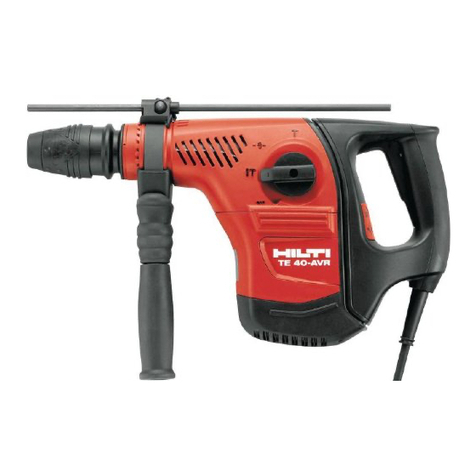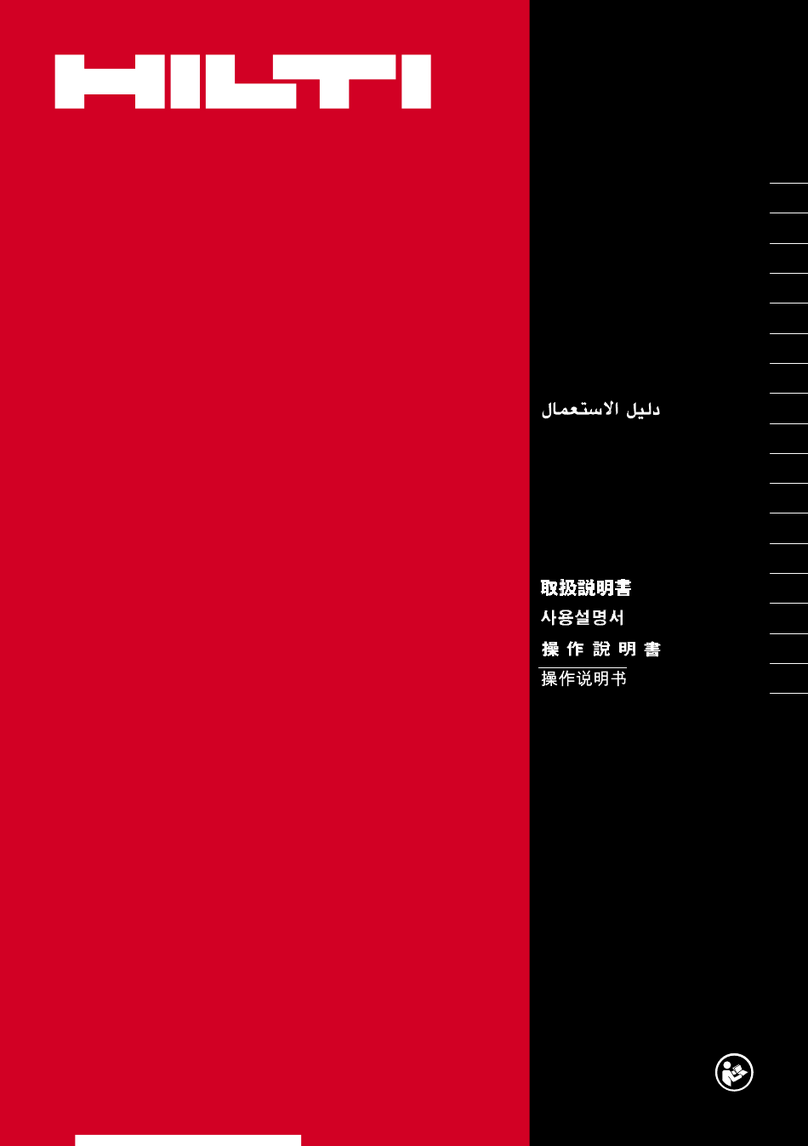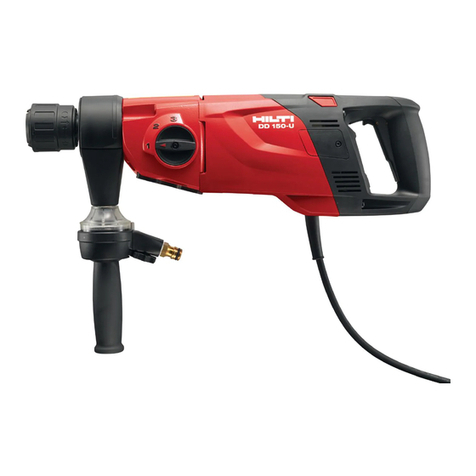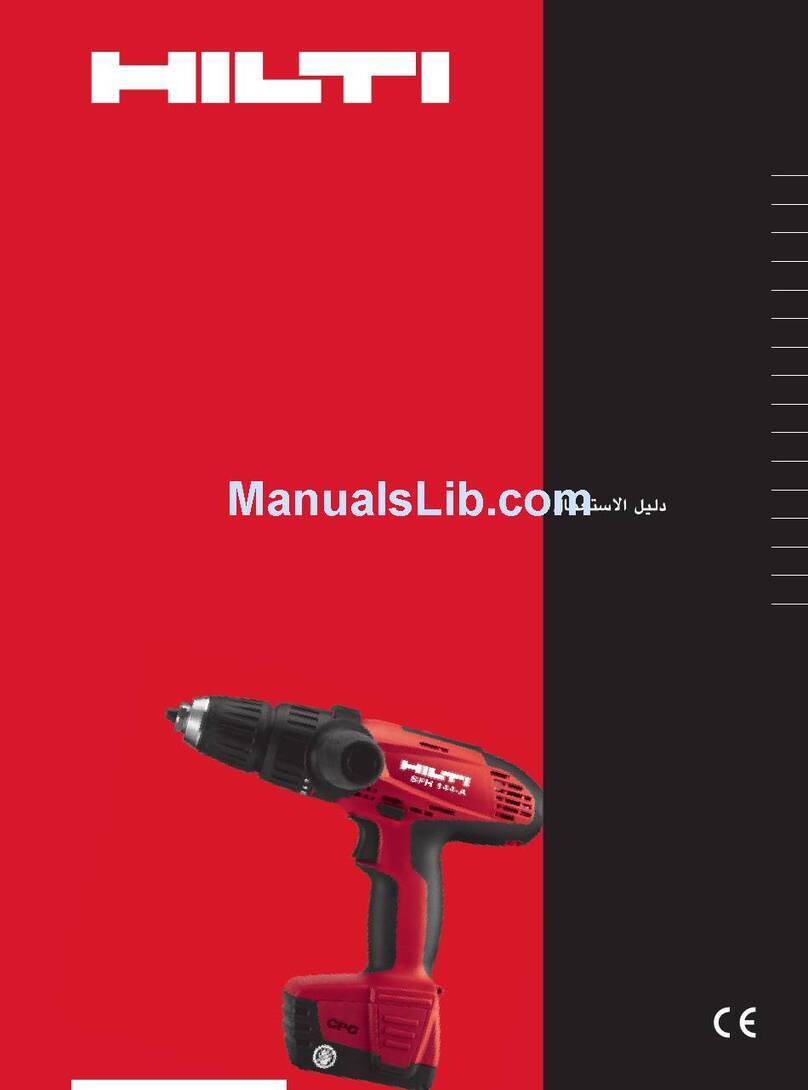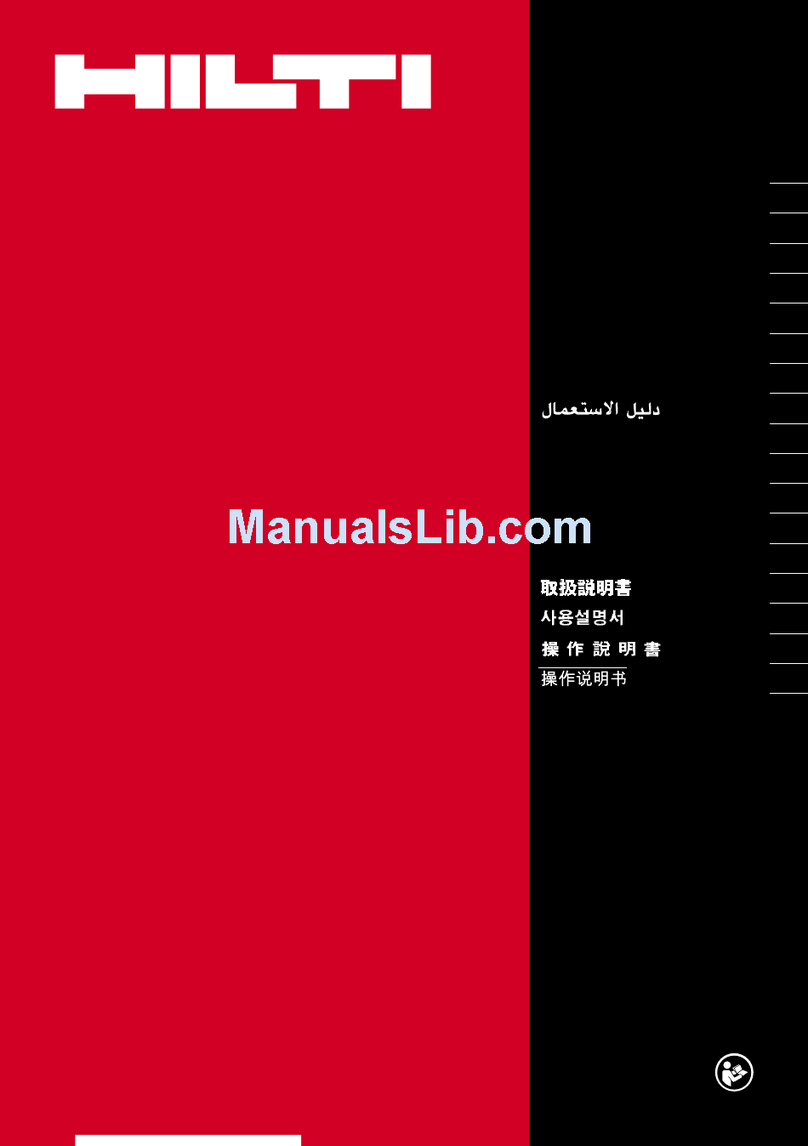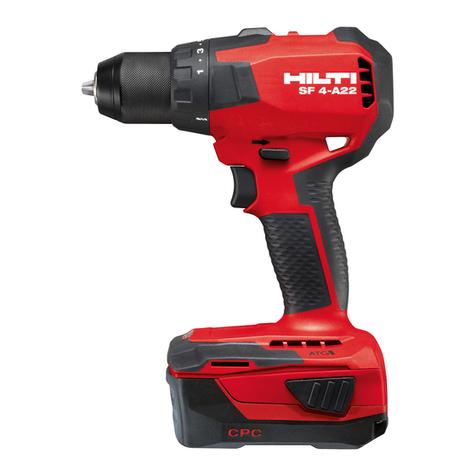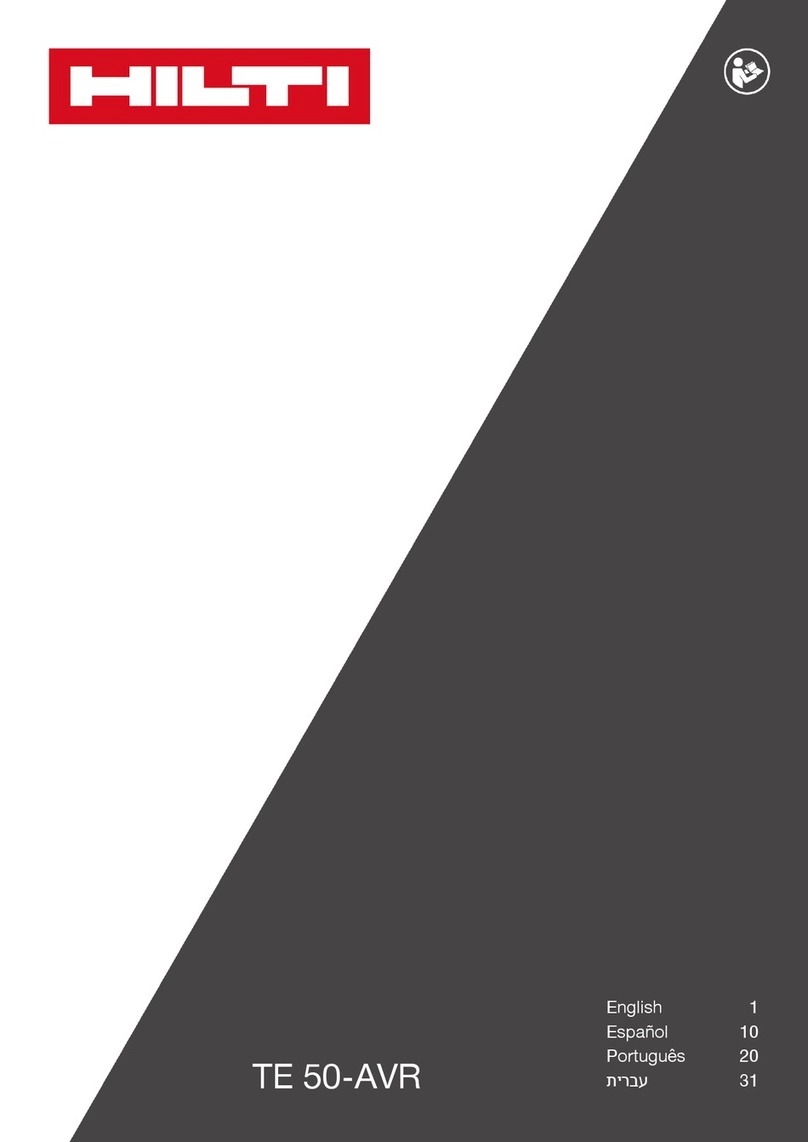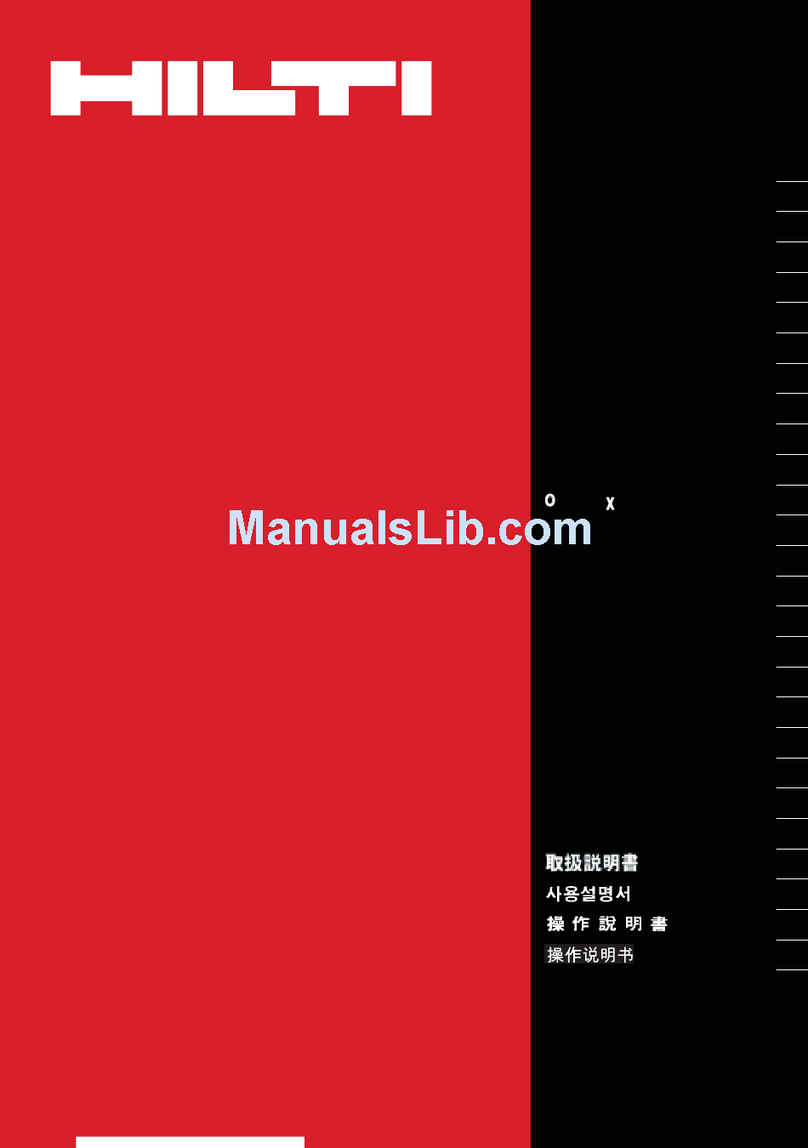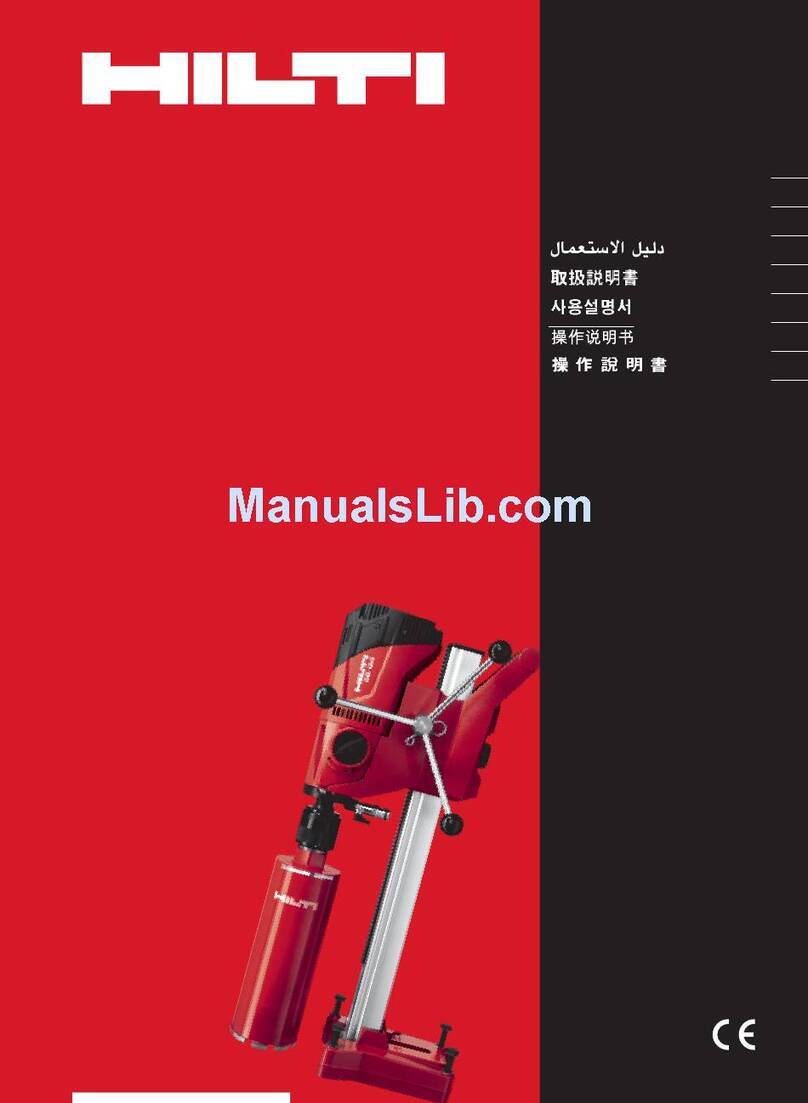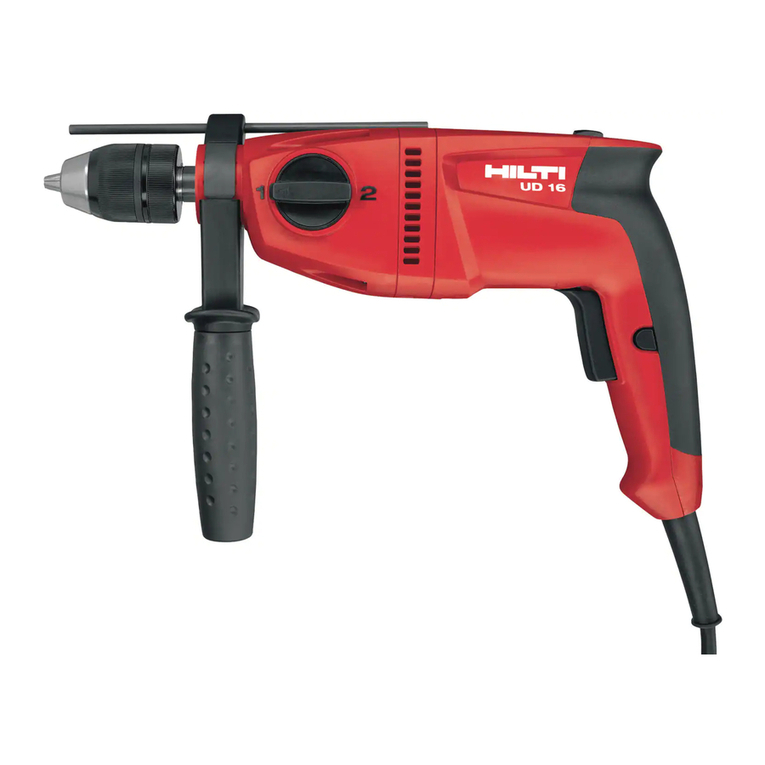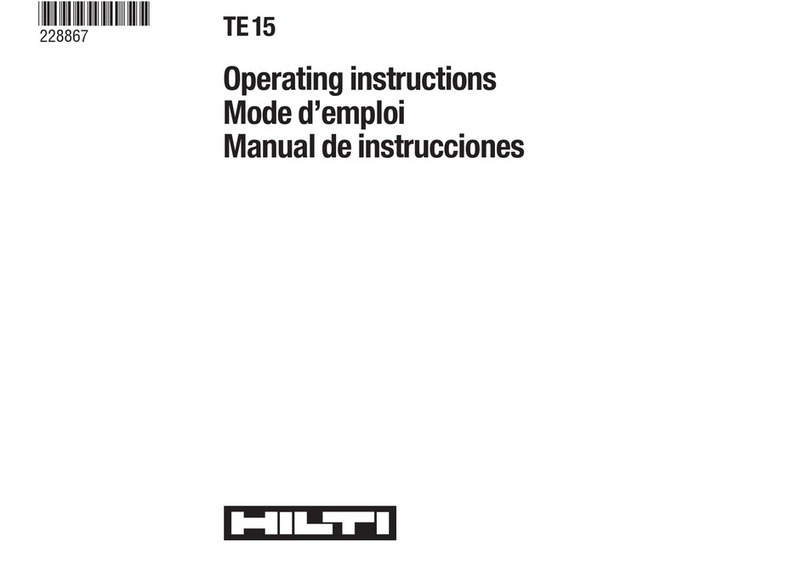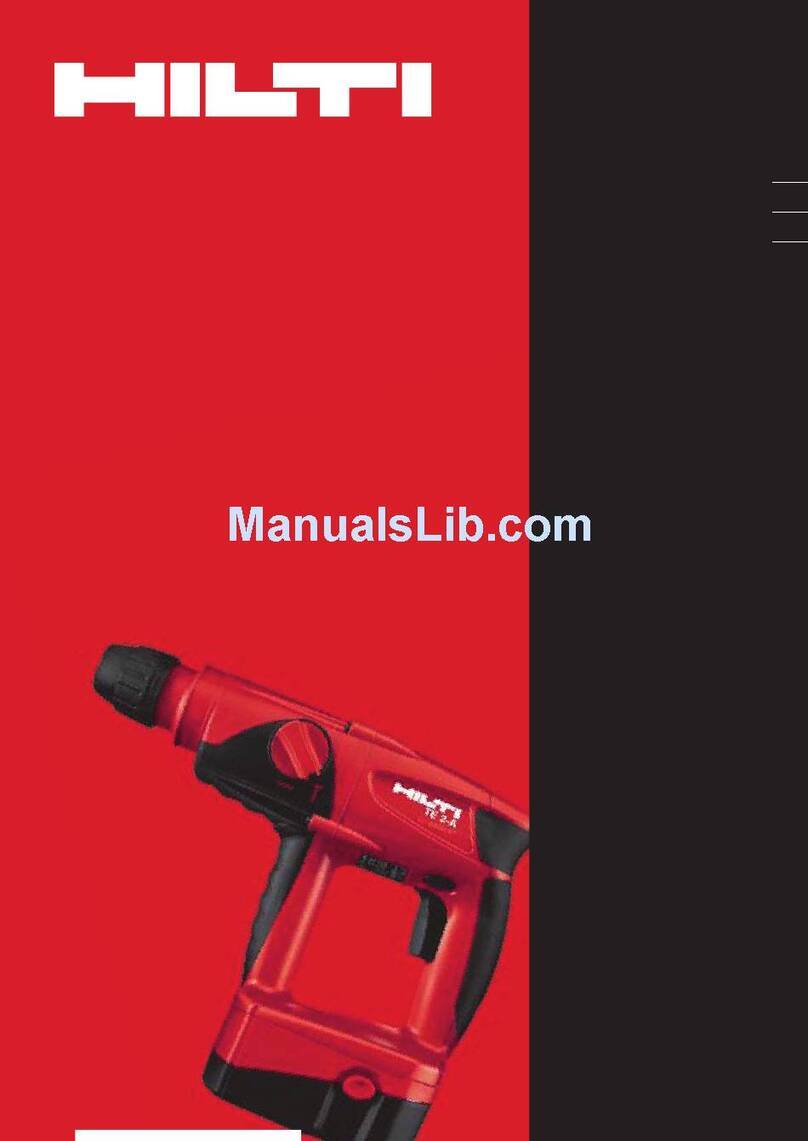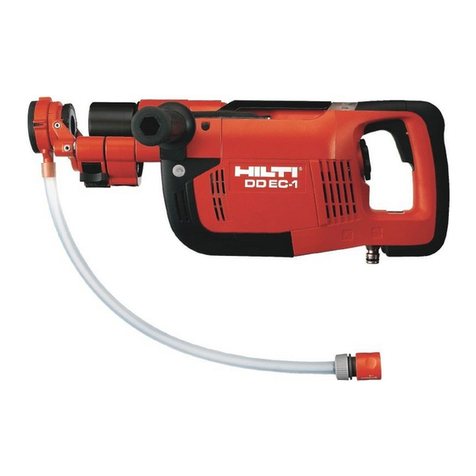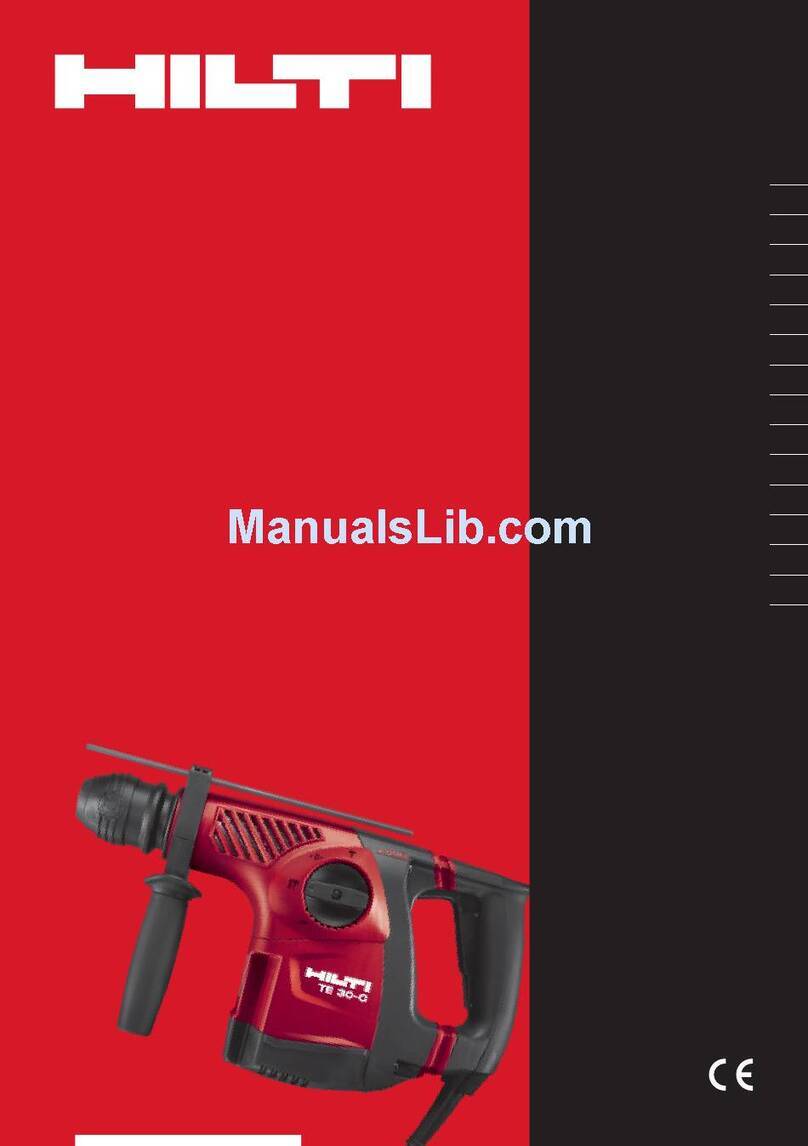2
Sicherheitshinweise
■
1Halten Sie Ihren Arbeitsbereich in Ordnung.
Unordnung im Arbeitsbereich birgt Unfallge-
fahr.
■
2Berücksichtigen Sie Umgebungseinflüs-
se. Setzen Sie Elektrowerkzeuge nicht dem
Regen aus. Benützen Sie Elektrowerkzeuge
nicht in feuchter oder nasser Umgebung. Sor-
gen Sie für gute Beleuchtung. Benützen Sie
Elektrowerkzeuge nicht in der Nähe von bren-
nenden Flüssigkeiten oder Gasen.
■
3Schützen Sie sich vor elektrischem Schlag.
Vermeiden Sie Körperberührung mit geerde-
ten Teilen, z.B. Rohre, Heizkörper, Herde, Kühl-
schränke.
■
4Halten Sie Kinder fern. Lassen Sie andere
Personen nicht das Werkzeug oder Kabel
berühren, halten Sie sie von Ihrem Arbeits-
bereich fern.
■
5Bewahren Sie Ihre Elektrowerkzeuge si-
cher auf. Unbenutzte Werkzeuge sollen in
trockenen, verschlossenen Orten und ausser
Reichweite von Kindern aufbewahrt werden.
■
6Überlasten Sie Ihr Elektrowerkzeug nicht.
Sie arbeiten besser und sicherer im angege-
benen Leistungsbereich.
■
7Benützen Sie das richtige Elektrowerkzeug.
Verwenden Sie keine leistungsschwachen
Werkzeuge oder Vorsatzgeräte für schwere
Belastungen. Benützen Sie Werkzeuge nicht
für Zwecke und Arbeiten, wofür sie nicht be-
stimmt sind, z.B. benützen Sie keine Hand-
kreissäge, um Bäume zu fällen oder Äste zu
schneiden.
■
8Tragen Sie geeignete Arbeitskleidung. Tra-
gen Sie keine weite Kleidung oder Schmuck.
Sie können von beweglichen Teilen erfasst
werden. Bei Arbeiten im Freien sind Gummi-
handschuhe und rutschfestes Schuhwerk
empfehlenswert. Tragen Sie bei langen Haa-
ren ein Haarnetz.
■
9Benützen Sie eine Schutzbrille. Verwen-
den Sie auch Atemmasken bei stauberzeu-
genden Arbeiten.
■
10 Keine Zweckentfremdung des Kabels. Tra-
gen Sie das Werkzeug nicht am Kabel und
benützen Sie es nicht, um den Stecker aus
der Steckdose zu ziehen. Schützen Sie das
Kabel vor Hitze, Öl und scharfen Kanten.
■
11 Sichern Sie das Werkstück. Benützen Sie
Spannvorrichtungen oder Schraubstock, um
das Werkstück festzuhalten. Es ist damit si-
cherer gehalten als mit Ihrer Hand und es er-
möglicht die Bedienung der Maschine mit bei-
den Händen.
■
12 Beugen Sie sich nicht zu weit darüber. Ver-
meiden Sie abnormale Körperhaltung. Sor-
gen Sie für sicheren Stand und halten Sie je-
derzeit das Gleichgewicht.
■
13 Pflegen Sie Ihre Werkzeuge mit Sorgfalt.
Halten Sie Ihre Werkzeuge scharf und sau-
ber, um besser und sicherer arbeiten zu kön-
nen. Befolgen Sie die Wartungsvorschriften
und die Hinweise eines Werkzeugwechsels.
Kontrollieren Sie regelmässig das Kabel und
lassen Sie es bei Beschädigung von einem
anerkannten Fachmann erneuern. Kontrollie-
ren Sie Verlängerungskabel regelmässig und
ersetzen Sie sie, falls beschädigt. Halten Sie
Handgriffe trocken und frei von Öl und Fett.
■
14 Ziehen Sie den Netzstecker. Bei Nichtge-
brauch vor der Wartung und beim Werk-
zeugwechsel, wie z.B. Sägeblatt, Bohrer und
Maschinenwerkzeugen aller Art.
■
15 Lassen Sie keine Werkzeugschlüssel stecken.
Überprüfen Sie vor dem Einschalten, dass die
Schlüssel und Einstellwerkzeuge entfernt sind.
■
16 Vermeiden Sie unbeabsichtigten Anlauf.
Tragen Sie keine an das Stromnetz ange-
schlossene Werkzeuge mit dem Finger am
Schalter. Vergewissern Sie sich, dass der
Schalter beim Anschluss an das Stromnetz
ausgeschaltet ist.
■
17 Verlängerungskabel im Freien. Verwenden
Sie nur dafür zugelassene und entsprechend
gekennzeichnete Verlängerungskabel im Frei-
en.
■
18 Seien Sie stets aufmerksam. Beobachten
Sie Ihre Arbeit. Gehen Sie vernünftig vor, ver-
wenden Sie das Werkzeug nicht, wenn Sie
unkonzentriert sind.
■
19 Kontrollieren Sie Ihr Gerät auf Beschädi-
gungen. Vor weiterem Gebrauch des Werk-
zeugs müssen Sie Schutzeinrichtungen oder
beschädigte Teile sorgfältig auf ihre einwand-
freie und bestimmungsgemässe Funktion
überprüfen. Überprüfen Sie, ob die Funktion
beweglicher Teile in Ordnung ist, ob sie nicht
klemmen, ob keine Teile gebrochen sind, ob
sämtliche anderen Teile einwandfrei, richtig
montiert und alle anderen Bedingungen, die
den Betrieb des Gerätes beeinflussen können,
stimmen. Beschädigte Schutzvorrichtungen
und Teile sollen sachgemäss durch eine Kun-
dendienstwerkstatt repariert oder ausge-
wechselt werden, soweit nichts anderes in
den Betriebsanleitungen angegeben ist. Be-
schädigte Schalter müssen bei einer Kun-
dendienstwerkstatt ersetzt werden. Benutzen
Sie keine Werkzeuge, bei denen sich der Schal-
ter nicht ein- und ausschalten lässt.
■
20 Achtung: Zu Ihrer eigenen Sicherheit benüt-
zen Sie nur Zubehör und Zusatzgeräte, die in
der Bedienungsanleitung angegeben sind oder
im jeweiligen Katalog angeboten werden. Der
Gebrauch anderer als der in der Betriebsan-
leitung oder im Katalog empfohlener Ein-
satzwerkzeuge oder Zubehöre kann eine per-
sönliche Verletzungsgefahr für Sie bedeuten.
■
21 Reparaturen nur vom Elektrofachmann.
Dieses Elektrowerkzeug entspricht den ein-
schlägigen Sicherheitsbestimmungen. Re-
paraturen dürfen nur von einer Elektrofach-
kraft ausgeführt werden, anderenfalls können
Unfälle für den Betreiber entstehen.
■
22 Schliessen Sie die Staubabsaug-Einrich-
tung an. Wenn Vorrichtungen zum Anschluss
von Staubabzugs- und auffangeinrichtungen
vorhanden sind, überzeugen Sie sich, dass
diese angeschlossen und und richtig genutzt
werden.
Achtung: Beim Gebrauch von Elektrowerkzeugen
sind zum Schutz gegen elektrischen Schlag,
Verletzungs- und Brandgefahr, folgende
grundsätzlichen Sicherheitsmassnahmen im-
mer zu beachten.
Lesen und beachten Sie diese Hinweise, be-
vor Sie das Gerät benutzen.
Bewahren Sie diese Hinweise sorgfältig auf.
Inhalt Seite
1. Warnungen 2
2. Sicherheitshinweise 3
3. Übersicht Diamant-Kernbohrsystem DD-400E 3
4. Abbildung Diamant-Kernbohrgerät DD-400E 3
5. Technische Daten 4
6. Technische Sicherheitseinrichtungen 4
7. Zusammenbau der Komponenten 4
8. Auswahlhilfe für Befestigungsart von Diamant-Kernbohrgeräten 5
9. Handhabung 5
10. Wartung 8
11. Entsorgung 8
12. Garantie 8
1. Warnung
1.1 Verwenden Sie das Gerät nie, ohne vorher in dessen sicheren Anwendung
geschult worden zu sein. Für die Beratung wenden Sie sich bitte an den Hilti-
Verkaufsberater.
1.2 Verwenden Sie das Gerät immer gemäss der Bedienungsanleitung, welche
stets mit dem Gerät mitzuführen ist.
1.3 Die Bohrarbeiten müssen von der Bauleitung genehmigt werden. Grosse
Bohrungen sowie das Durchtrennen von Armierungen beeinflussen die Sta-
tik. Weiters muss der Bohrbereich frei von Gas-, Wasser-, Strom- oder son-
stigen Leitungen sein.
1.4 Der vorder- bzw. rückseitige Bohrbereich ist dermassen abzusichern, dass
Personen oder Einrichtungen durch herabfallende Teile nicht verletzt bzw.
beschädigt werden können.
1.5 Betreiben Sie das Gerät unter nie mit nach links (Gegenuhrzeigersinn) dre-
hender Bohrkrone.
1.6 Der Tragegriff des Motors darf nicht für die Aufnahme von Hebezeugen ver-
wendet werden.
Gehörschutz tragen Sicherheits-Hand-
schuhe tragen
Schutzbrille tragen
Printed: 07.07.2013 | Doc-Nr: PUB / 5069604 / 000 / 00

